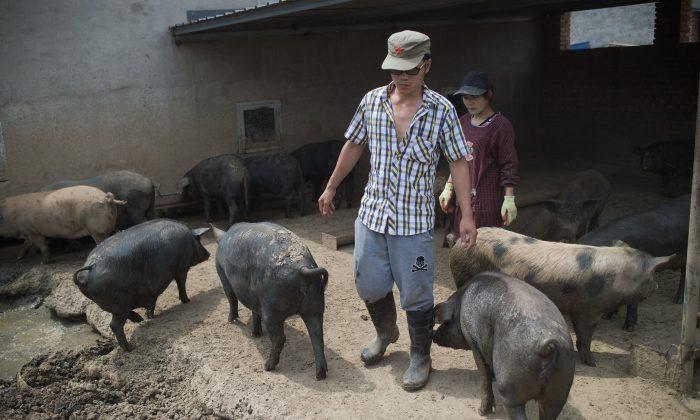African swine fever has taken its toll on pigs throughout China, with two new outbreaks registered in the eastern province of Anhui within two days.
On Sept. 11, according to China’s Southern Metropolis Daily, local authorities in the city of Shenzhen discovered 750 kilograms (about 1650 lb) of unlicensed pork in a small house. Rumor was that some of the pork came from the bodies of pigs that were later unearthed and sold.
When Shenzhen patrolmen opened the door to the one-room house, they found pig heads lying on the ground, and rotten pork stored in two large freezers. The authorities have not found the owner of the house, nor determined the origin of the pork. They did not test the pork to see if it was laced with the African swine fever virus before having it disposed of.
The first outbreak of African swine fever in China was reported in early August in the northeastern city of Shenyang, Liaoning Province.
On Sept. 12, the Anhui Provincial Agriculture and Animal Husbandry and Veterinary Bureau reported two new outbreaks in the previous two days, making eight total outbreaks in the province. Other outbreaks have been reported in the northeastern and eastern Chinese provinces of Heilongjiang, Liaoning, Henan, Zhejiang, and Jiangsu.
On Sept. 13, China’s Ministry of Agriculture and Rural Affairs published an announcement to mandate a temporary nationwide suspension on the use of any type of pig blood products in swine feed. The new regulation also requires provinces that have experienced outbreaks to stop feeding pigs swill, and to conduct sampling tests.
Despite the regulations, many Chinese are still concerned due to censorship of sensitive information about the outbreaks and because of reports that tainted pork is being made into sausages.
A widely shared video shows workers in a sausage factory making meat from the mud-caked remains of deceased pigs, raising much speculation that the pigs had died of African swine fever and were buried before being processed as food.
Wu Xiaodong, a researcher at the China Center for Animal Health and Epidemiology, said that the African swine fever virus can survive for one decade in frozen meat. If not brought under control, the epidemic could ravage the Chinese pork industry.
According to China’s National Bureau of Statistics, China had 409 million live pigs by the end of June 2018, and had produced 334 million live pigs in the first six months. The average price for a live pig is about 15 yuan/kg, and each pig weighs between 100 and 150 kg, which adds up to a net annual revenue of up to 1.25 trillion yuan ($180 billion).






Friends Read Free